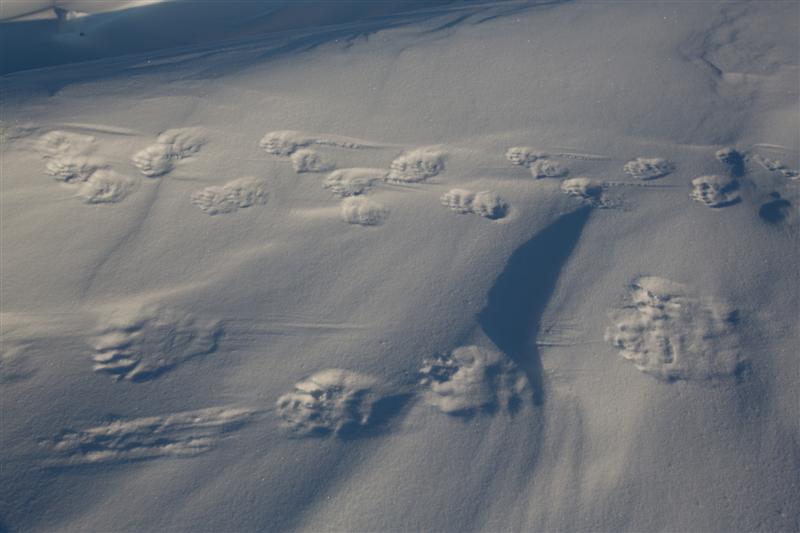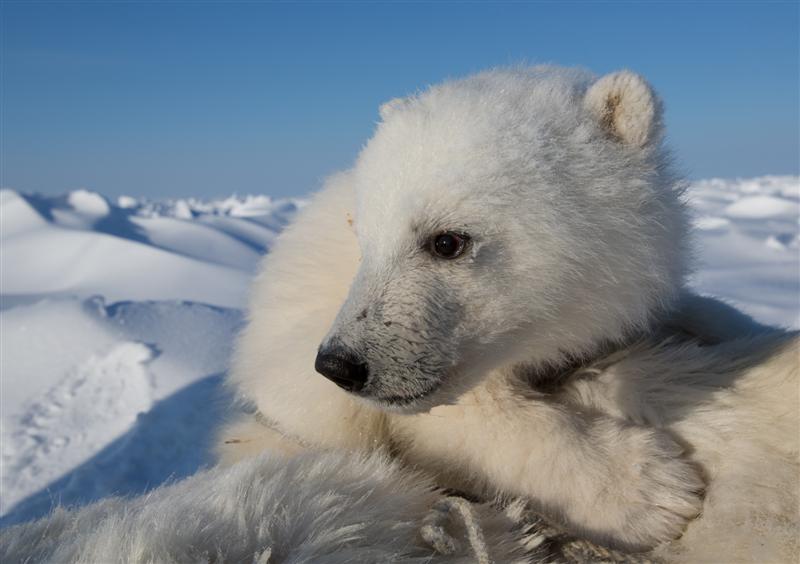Jon Aars is a researcher with the Norwegian Polar Institute, Norway’s main institution for research, environmental monitoring and mapping of the polar regions. With the support of WWF, Aars studies polar bear populations on the Norwegian island of Svalbard. Read all of his field notes from a Spring 2013 research expedition, and follow the bears on our Polar Bear Tracker.

10th April – Today we had a good day in field, with six bears handled. We flew quite far, to Edgeøya at the south-eastern part of Svalbard. Hunters who shot bears for hides many decades ago frequently stayed here over the winter, as many bears pass through the area.
In the morning we found fresh tracks from a female with two cubs, but lost them when the snow got so hard the prints were not longer visible. We started to get a bit low on fuel, but fortunately had a depot on the island where we could refuel and thus continue the search on the east side of the island.
In front of one of the big glaciers we again encountered tracks, this time from a pair of mating bears. April is mating season. Tracks from bears mating are quite distinctive, frequently with parallel tracks with a lot of sharp turns and no particular direction. We found the bears after some effort, and darted them. She was a recapture, marked last year, about six years old.
Later we found a polar bear maternity den, occupied by a visiting adult male, and likely already departed by the family. He also turned out to be a known bear, marked in 2008, now close to 15 years old. We then searched for a female with two small cubs out in some very structured sea ice, making it quite challenging to follow the tracks. But finally we found them, a young female with her first litter, two small cubs about weighing about 8 kilos. Back on the boat we finally got a deserved meal after a long day. When it’s below -20°C and windy all day, then a warm meal is always good to warm up.
